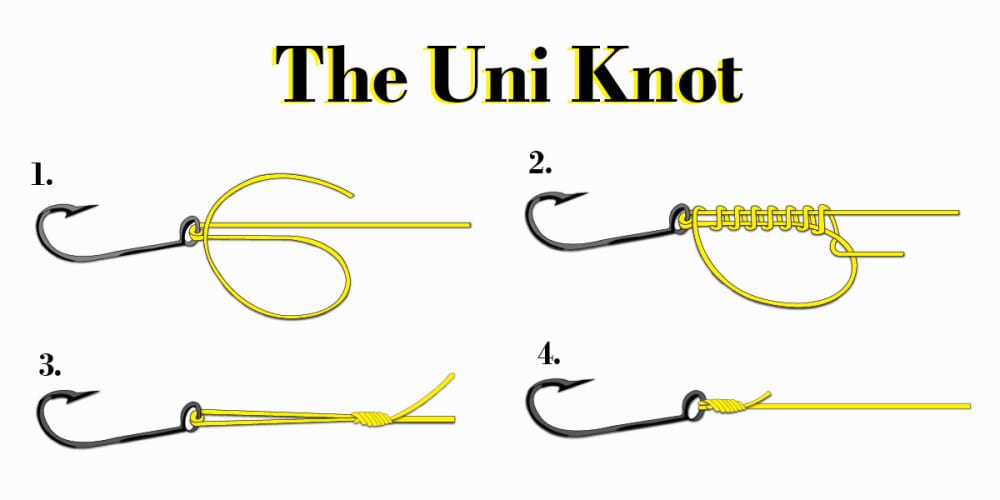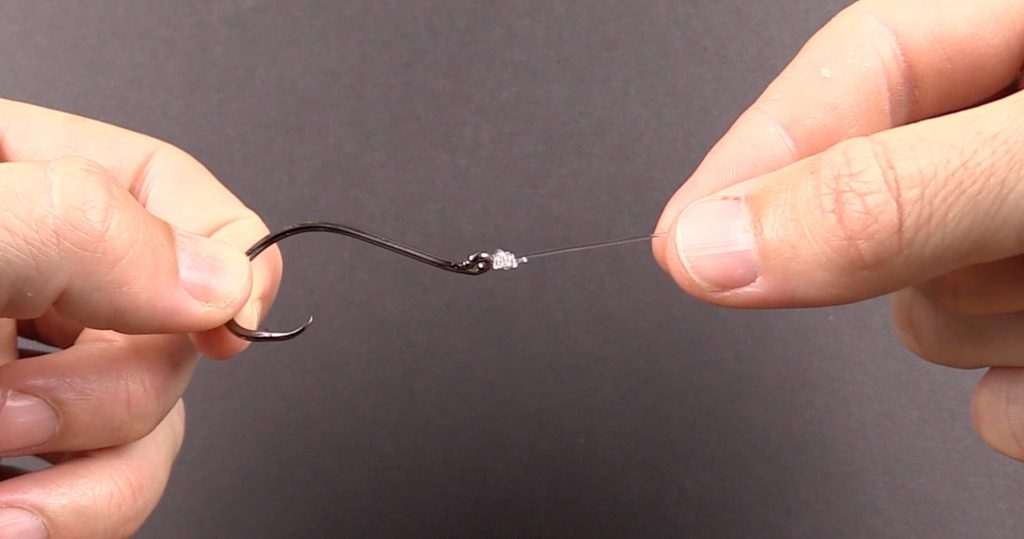Fishing can be a fun and relaxing activity, and with the right equipment and knowledge, you’re sure to have a great time. Are you looking to go fishing but not sure how to tie a knot?
There is no need to be intimidated by the process of tying a fishing knot. In fact, it is relatively simple once you know how to do it. The uni knot is a popular choice for attaching a fishing line to a lure or hook, and this guide will show you how to tie it. With a bit of practice, you’ll be able to tie this knot with ease. Look no further, this blog post will explain how to do it in a step-by-step guide. Let’s get started!
What is a Uni Knot?
A Uni Knot, also known as a Hangman’s one, is one of the most popular fishing knots. It has an excellent reputation for being very strong and reliable. Many anglers who use this knot claim that they have never lost a fish due to the knot slipping or breaking. This knot has many good qualities. It is relatively easy to tie and can handle heavy lines, cables, or leaders with ease. The uni knot also has the ability to stay locked in place even when exposed to shock, making it great for catching large fish.
The Uni Knot is a popular choice among saltwater fishermen as well as those who fish freshwater streams or ponds. Many fly fishers also use the Uni Knot to tie on tippet material as it is a strong and reliable knot that works well with fluorocarbon material.
The only drawback to the uni knot is that it can have a tendency to loosen up when exposed to time or weather elements if the knot isn’t properly dressed after being tied. Even though this knot was once considered the best fishing knot for joining two pieces of line together, many anglers prefer its cousin- The Yucatan Knot. How To Tie A Uni Knot (Step By Step Instructions).
Why Use A Uni Knot?
The uni knot is great for tying tippet material to a leader or wire that you may use while fishing trout or saltwater species. The knot is also often used by bass fishermen as a way to join the mainline to a leader. This knot has a good reputation for being strong and reliable, making it ideal for those times when you are battling a large fish.
How To Tie A Uni Knot
What to prepare
A Uni Knot is a popular terminal tackle knot that can be used with many different types of fishing lines, but before getting started make sure you have plenty to practice on. With an error-prone fisherman like myself at hand, it pays off to have some extra line just in case something goes wrong! When tying this particular technique there need minimal materials; all I need are my eyelets from hooks or lures and swivels according as well any snaps etc.

Detailed instructions
One of the appealing factors of this fishing knot is bridging the Superline with leader material. Further, it is also ideal for typing the hook and connecting a line with a reel. Indeed, the monofilament line is applicable the most to the Uni knot.
Below are 4 easy steps to handle this knot:
Step 1: Leave the fishing line through the eye hook and double back it in parallel.
Step 2: Twisting the tag end around the double line with 6 turns and through the loop.
Step 3: Lubricate and pull the main line to tighten the turns.
Step 4: Settle the knot down to close the eye or leave a tiny loop according to your desire.
Variations of the uni knot
There are a few variations of the uni knot that can be helpful in certain fishing situations.
The Double Uni Knot- This is a two-loop variation of the uni knot that is often used to join two pieces of line together.
The Triple Uni Knot- This knot uses three loops instead of just two, making it a stronger variation that can handle larger lines.
The Uni To Uni Knot- This is another name for the double uni knot.
The Four-Way Uni Knot- This knot uses four loops instead of just two, making it the strongest variation that will handle heavy wire leader material or cable.
Why You Fail To Tie A Uni Knot
There are a few reasons why you might be struggling to tie a Uni Knot. One possibility is that you’re not placing the knot in the right spot. Another possibility is that your line isn’t wet enough. Finally, it’s possible that you’re using the wrong type of line. Let’s take a closer look at each of these possibilities.
First, where you place the knot can make a big difference. The best location for tying the Uni Knot is right up close to the hook eye. This way, there’s no gap between your leader and tippet when you tighten it down. It also means that your tippet will be completely covered by the knot. This protects the tippet from damage and also helps to keep the fly in place. If you’re having trouble tying the knot in this location, try using a smaller hook.
Second, it’s important to wet your line before tying the Uni Knot. This will help to lubricate the line and make it easier to tie the knot. You can wet the line by running it underwater, or you can use saliva. Some people even use a special product called Knot Sense, which is designed to make tying knots easier.
Finally, the type of line you’re using can also affect your ability to tie the Uni Knot. monofilament line is much easier to tie than fluorocarbon line. If you’re having trouble tying the knot, try using a monofilament line instead of fluorocarbon.
FAQs
How strong is the Uni Knot?

The Uni Knot is a strong and reliable knot that is often used by anglers. It is easy to tie, and it can be used to tie a variety of different types of lines. The Uni Knot is also particularly resistant to slippage, making it a great choice for fishing in difficult conditions. While there are other knots that may be stronger than the Uni Knot, it is still a very strong knot that can be trusted to hold up under pressure. In fact, the Uni Knot has been tested and proven to be stronger than many of the other popular knots available. When used correctly, the Uni Knot is a great knot for all your fishing needs.
So, how strong is the Uni Knot? Well, according to tests, it is actually one of the strongest knots available. It has been shown to be stronger than the popular clinch knot, and it can hold up against a lot of pressure. This makes it a great choice for fishing in difficult conditions, where you need a knot that will not slip. The Uni Knot is also very easy to tie, which makes it a great choice for novice anglers. If you are looking for a strong, reliable knot that is easy to tie, the Uni Knot is a great option.
Which fishing line would be most suited for a Uni Knot?
There are a few different types of fishing lines that can be used for a Uni Knot, but the most popular option is the monofilament line. The monofilament line is strong and durable, making it ideal for tying knots. It also has a low memory, which means it will not kink or curl when you’re casting. Some anglers also prefer to use fluorocarbon lines, but it’s important to note that the memory on this type of fishing line is higher than with monofilament.
Conclusion
The uni knot is a strong and reliable fishing knot that has many good qualities. It is easy to tie, can handle heavy line or leader material, and is great for those times when you are battling a large fish. Unfortunately, there are times when the line will loosen up if not properly dressed after being tied. If you are using this knot for tippet material to your leader or mainline, be sure to tie it securely and then dress it down with a fishing line or electrical tape until it is uniform in its structure. With a little practice, you will be able to tie the uni knot quickly and easily, making it one of your go-to knots for all your fishing needs.







